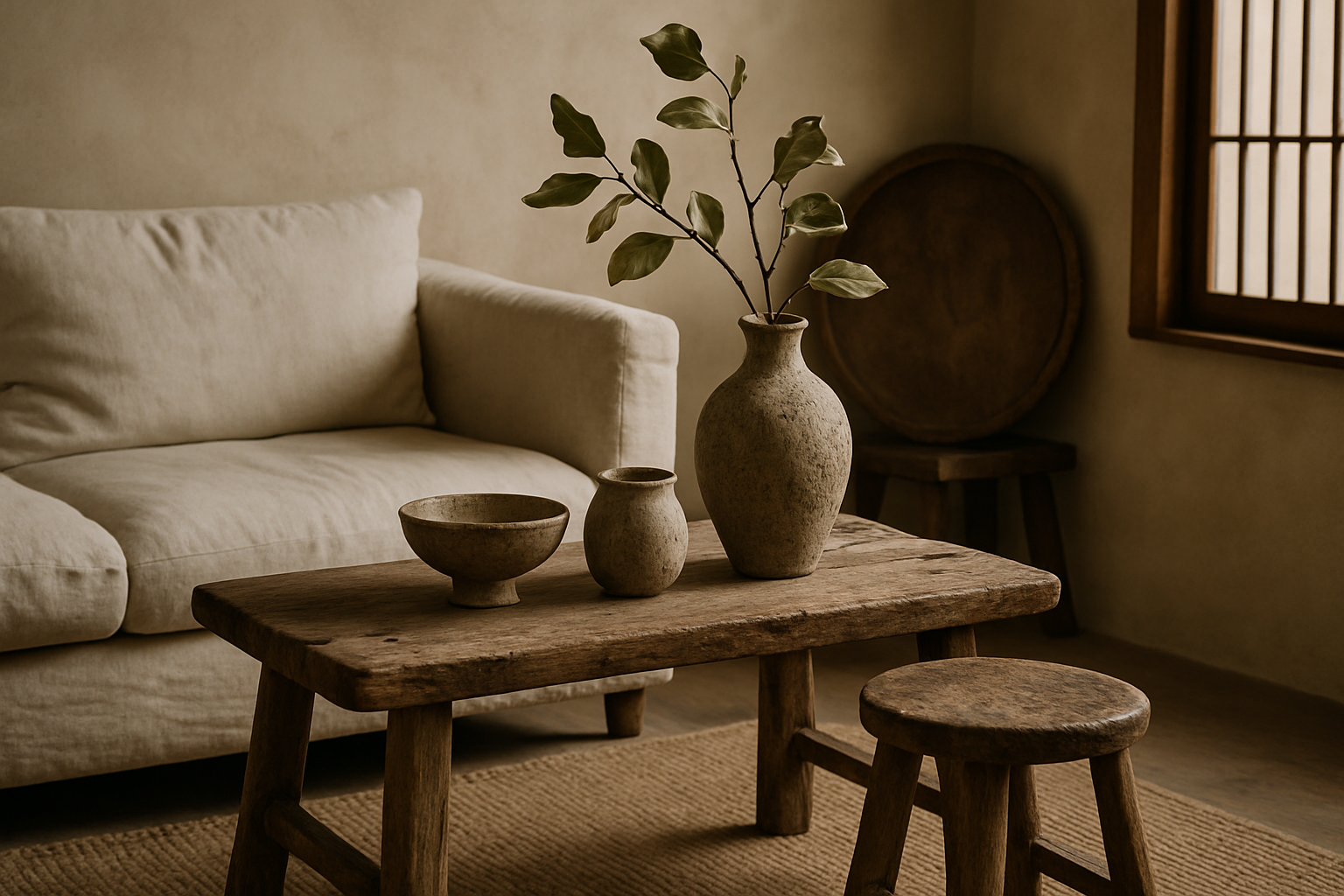Wabi-Sabi Inspired Home Design: Embracing Imperfection in American Interiors
The concept of wabi-sabi, an ancient Japanese philosophy celebrating the beauty of imperfection, is making waves in American home design. This aesthetic approach, rooted in simplicity and authenticity, offers a refreshing counterpoint to the polished perfection often sought in modern interiors. As homeowners increasingly seek spaces that reflect genuine lived experiences, wabi-sabi principles are finding their way into living rooms, kitchens, and bedrooms across the country.

The Roots of Wabi-Sabi
Wabi-sabi originated in 16th century Japan as a reaction to the prevailing aesthetic of ornate, perfect, and costly objects. The term combines two concepts: wabi, which refers to simplicity and humility, and sabi, which speaks to the beauty that comes with age and wear. In traditional Japanese culture, this philosophy manifested in tea ceremonies, architecture, and pottery, valuing items that were handmade, irregular, and showed signs of use.
In the context of home design, wabi-sabi encourages an appreciation for natural materials, organic forms, and the marks left by time and use. It’s about finding beauty in the cracks, wear, and imperfections that tell a story of an object’s history and the life lived around it.
Wabi-Sabi Materials and Textures
At the heart of wabi-sabi design is a deep appreciation for natural materials and textures. In American homes, this translates to an increased use of raw, unfinished surfaces and organic elements. Rough-hewn wooden beams, exposed brick walls, and handmade tiles are becoming popular choices for those seeking to incorporate wabi-sabi principles.
Stone, particularly in its natural, unpolished state, is another key material in wabi-sabi interiors. From rough-cut marble countertops to river rock shower floors, these elements bring a sense of permanence and connection to nature into the home. Clay, with its earthy texture and warm tones, is also seeing a resurgence in popularity, both in architectural elements and in decorative objects.
The Art of Imperfection in Decor
Wabi-sabi challenges the notion that everything in a home should be new, matching, or flawless. Instead, it encourages the incorporation of items that show signs of age, wear, or repair. This could mean proudly displaying a cherished family heirloom with visible mending, or choosing furniture with natural knots, burls, or irregularities in the wood grain.
In the realm of textiles, wabi-sabi favors natural fibers like linen, cotton, and wool, often in their undyed states or in muted, earthy tones. Handwoven textiles, with their slight irregularities, are particularly prized. The Japanese technique of Sashiko mending, where visible stitching is used to repair and strengthen fabric, is also gaining popularity as a way to extend the life of textiles while adding visual interest.
Wabi-Sabi Color Palettes
The color palette of a wabi-sabi inspired home tends to be subdued and natural, drawing inspiration from earth, stone, and plant life. Warm neutrals like beige, cream, and soft gray form the base, often accented with deeper tones of charcoal, rust, or forest green. These colors create a sense of calm and groundedness, allowing the textures and forms of the space to take center stage.
That’s not to say that wabi-sabi interiors are devoid of color. Pops of muted color, often in organic forms like a vase of wildflowers or a hand-dyed textile, can add depth and interest to the space. The key is to choose colors that feel harmonious and natural, rather than bold or artificial.
Embracing Minimalism and Negative Space
Wabi-sabi shares some common ground with minimalism in its appreciation for simplicity and restraint. However, where minimalism often strives for sleek perfection, wabi-sabi finds beauty in the humble and imperfect. In practice, this means creating spaces that feel lived-in and personal, rather than stark or showroom-like.
Negative space plays a crucial role in wabi-sabi interiors. By leaving areas of a room empty or sparsely decorated, the eye is drawn to the beauty of individual objects and the interplay of light and shadow. This approach not only creates a sense of calm and spaciousness but also allows each item in the room to be fully appreciated for its unique qualities.
The Role of Nature and Seasonality
Connection to nature is a fundamental aspect of wabi-sabi philosophy, and this extends to home design. Large windows that frame views of the outdoors, indoor plants, and natural light are all important elements. The changing of seasons is also celebrated, with decor and arrangements evolving to reflect the natural world outside.
This might mean swapping out heavier textiles for lighter ones as spring arrives, or bringing in branches and pinecones to decorate for winter. By acknowledging and embracing the cycles of nature, wabi-sabi interiors remain dynamic and connected to the world beyond their walls.
Wabi-Sabi in the Digital Age
In our increasingly digital and fast-paced world, the principles of wabi-sabi offer a much-needed antidote to the pursuit of perfection. By embracing imperfection and the marks of time, wabi-sabi inspired homes become sanctuaries of authenticity and mindfulness. They remind us to slow down, appreciate the present moment, and find beauty in the simple and imperfect aspects of our lives.
As more Americans seek to create homes that reflect their values and offer respite from the demands of modern life, the influence of wabi-sabi is likely to grow. This shift towards authenticity and imperfection in design not only creates more personal and livable spaces but also encourages a more sustainable approach to home decor, valuing quality, longevity, and the beauty that comes with age.





